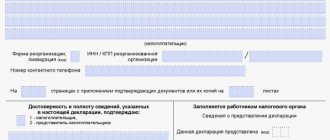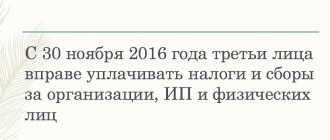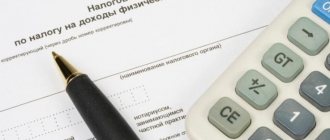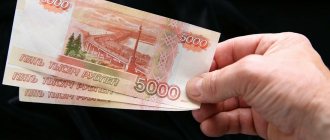What taxes does an individual entrepreneur pay in 2020 and how to calculate them
- K1 – deflator coefficient. The Ministry of Economic Development of the Russian Federation sets this indicator annually.
- K2 – reduction coefficient, set annually by regional structures (ranges from 0.005 to 1).
- DB – basic monthly income per physical unit. indicator.
- FP is a physical indicator, which can be the number of workers, retail facilities or the area of the trading floor and many other options.
- Income at a rate of 6 percent.
- Profit at a rate of 15 percent.
- Imputed income tax (UTI) is popular among individual entrepreneurs without employees. It simplifies reporting and tax pressure. Payment is 15 percent of income;
- The patent system completely eliminates the payment of tax; it is necessary to pay 6 percent of the basic income of an individual entrepreneur for a patent;
- The Unified Agricultural Tax (USAT) is valid exclusively for production related to agricultural products. The organization pays 6 percent of profits to the treasury.
https://youtu.be/8uq4pJUciVY
How to reduce UTII tax on contributions from individual entrepreneurs without employees
Tax and insurance payments for individual entrepreneurs working with hired employees and independently will be different. The amount of imputed tax is determined by substituting specified variable values into a certain formula. The formula is as follows: FP * DB * Coef1 * Coef2 * 15% = tax on imputed income for one month.
This formula uses the following indicators:
- FP is a physical indicator by which the potential profitability of a business activity is determined;
- BD - basic profitability per month per unit of FP, estimated in rubles;
- Coefficient1 is a deflator indicator, indexed every year and assigned by order of the Ministry of Economic Development of the Russian Federation;
- Coefficient2 is a reducing indicator that is adopted annually by regional authorities (and can vary in the range from 0.005 to 1).
For the current 2020, the deflator coefficient Coef1 is equal to 1.868 (see order of the Ministry of Economic Development No. 579 of October 30, 2017). The tax rate in this formula is assumed to be 15%, but this figure can also vary from 7.5% to 15% for different types of activities in different regions of the country.
Working under the UTII system implies that entrepreneurs are automatically exempt from paying the following taxes:
- personal income tax;
- value added tax (except for that paid when importing goods into the Russian Federation);
- tax on property of individuals used to make a profit when doing business.
Insurance premiums for a private entrepreneur’s own insurance in 2020 consist of two parts:
- the permanent part, which for the entire 2020 is 32,385 rubles;
- the variable part, which is required to be paid only by those individual entrepreneurs whose annual income exceeds the mark of 300,000 rubles.
The variable part is calculated as 1% of the amount by which the businessman’s income for the year exceeded 300,000 rubles. Article 430 of the Tax Code of the Russian Federation states that the amount of contributions for UTII payers is calculated based on the imputed income, and not on the actual income received. Thus, the entrepreneur often has every chance of winning.
The annual amount of contributions can be paid in four equal installments if the physical indicator tied to a specific type of business did not change during this year (for example, the store area in square meters remained constant, the number of employees did not decrease or increase, and so on).
Calculation example
Taxes can be reduced by the amount of payments transferred to the Pension Fund and compulsory medical insurance, both for employees and for the individual entrepreneur himself. When combining tax regimes, it is necessary to correctly calculate how to distribute the shares of contributions. In accordance with Art. 346.18 clause 8 of the Tax Code, taxpayers must keep separate records if they combine several tax regimes.
Things to consider:
- Whether there are employees or not. If there are none, then taxes can be reduced by the amount of the listed fixed payments for the entrepreneur in full, but if there are employees, then only by 50%.
- It is necessary to determine the shares by which taxes will be reduced - fixed contributions of individual entrepreneurs, payments are divided in accordance with the income received for each type of activity.
Let’s assume that an individual entrepreneur on the simplified tax system of 6% without employees received income for the first quarter from the sale of spare parts in the amount of 350 thousand rubles, the tax amounted to 21,000 rubles.
The income of the car service center that applies UTII amounted to 252,439 rubles - we take the estimated amount. In the first month there were 3 employees, in the second 4, and in the third 6. Contributions in the amount of 7,000 rubles were transferred from the employees’ salaries.
First of all, let's calculate the amount of fixed payments:
- In this example, we assume that the individual entrepreneur pays his own contributions quarterly, i.e. based on the amount established for 2020, we get 6997.50.
- Since we have 2 taxation systems, we add up income under the simplified tax system and income under UTII (here we take income based on the basic profitability, and not actually received), we get 350,000,252,439 = 602,439. We calculate 1% on amounts over 300 thousand rubles. (602,439 – 300,000) * 1% = 3024.39 rubles.
- The total amount of individual entrepreneur contributions for himself was: 6997.5 3024.39 = 10,021.89 for employees 7000 rubles.
How to distribute payments:
- The total income is 602,439, of which UTII accounts for 41.90% (252,439/602,439*100) of the total income, then the simplified tax system is 100% - 41.90% = 58.10%.
- We distribute the shares of fixed payments: the simplified tax system can be reduced by them by the amount of 10,021.89 * 58.10% = 5,822.72. The balance in the amount of 10,021.89 – 5,822.72 = 4199.17 will reduce UTII.
Let's reduce taxes:
- The simplified tax system without employees was 21,000. Let’s reduce it by the amount of individual entrepreneurs’ payments to the Pension Fund and compulsory medical insurance: 21,000 – 5822.72. Thus, the tax payable will be 15,177.28.
- UTII with employees will be reduced by the amount of payments for employees and individual entrepreneurs for themselves, but not more than 50%. We get 37866 – 4199.17 – 7000 = 26,666.83.
Important! In the new UTII declaration, which is valid starting from the first quarter of 2020, you can reduce the tax if you have employees, both by the amount of contributions for employees and the amounts transferred and individual entrepreneurs for yourself.
Question: The patent taxation system does not imply a reduction in the calculated tax by the amount of fixed payments. While this can be done with the simplified tax system. What to do in this case, should payments be distributed as described earlier?
Answer: According to the letter of the Federal Tax Service of Russia No. GD-4-3/3512 dated February 28, 2014, the amount of tax under the simplified tax system can be reduced by the entire amount of payments of individual entrepreneurs if there are no hired employees. The amount is not distributed according to the above principle.
To find out UTII for the quarter, you need to multiply the following indicators:
- BD (basic profitability) is a constant figure determined by type of activity.
- FP (physical indicator) is a figure that is different for each entrepreneur. This may be the area of the sales floor, the number of staff, the number of vehicles or another indicator.
- K1 – coefficient established by the Ministry of Economy. Its size for 2020 is 1,798.
- K2 is a coefficient regulated by the local treasury.
- Rate – 15%.
- The number of months in the period is 3.
Calculation example No. 1
Calculation example No. 2
1,800 x (12 12 12) x 1.798 x 0.8 x 4 = 372,833 rub. 28 k.
372,833.28 x 1% = 3,728 rub. 33 k.
The additional payment to the Federal Tax Service is small, so the fictitious entrepreneur paid it in full in the first quarter.
13,981.25 – (42,555 6,997.5 3,728.33) = -39,299 rub. 58 k.
And then he remembered the rule: according to the law, a taxpayer with staff cannot reduce the duty by more than half, so payable = 13,981.25/2 = 6,990 rubles.
It is not difficult to calculate UTII and subtract insurance premiums from it. The main thing is to understand tax legislation, pay taxes to the budget on time and be more careful when making calculations.
The Tax Code allows an entrepreneur to apply “imputation” for some types of activities, and to switch to the simplified tax system for others, including with the object “income”. How to take into account contributions “for yourself” if the first type of business employs hired workers, but when implementing the second type of business they are absent?
The Russian Ministry of Finance believes that contributions can be taken into account without restrictions when paying taxes under a system where there is no staff. This is stated in the letter dated 04/03/13 No. 03-11-11/130 (see “Combining the simplified tax system and UTII: how can an entrepreneur reduce taxes on insurance contributions if employees are engaged in only one activity”).
It talks about a situation where employees are hired for “imputed” activities, while the “simplified” activities are handled by the entrepreneur himself. The authors of the letter explain: fixed contributions can be fully attributed to the reduction of the single “simplified” tax. This approach is also applicable in the opposite situation, when employees are involved only in activities that fall under the simplified tax system.
But there is one subtlety here. Most likely, during the inspection, inspectors will require proof that all employees are employed in only one type of business. Books for recording income and expenses would be suitable as evidence, from which it would follow that the entire salary was attributed exclusively to “imputed” or only to the simplified tax system.
The legislation allows the combination of tax regimes for both individual entrepreneurs and legal entities. However, the taxpayer is obliged in this case to keep separate records of income and expenses under different tax regimes (clause 8 of Article 346.18 of the Tax Code of the Russian Federation). This is due to the fact that the mechanisms for calculating and collecting tax on the simplified tax system and UTII are different.
- Individual entrepreneurs pay insurance contributions to the Pension Fund and the Compulsory Medical Insurance Fund. Entrepreneurs do not calculate and pay insurance premiums for compulsory social insurance in case of temporary disability and in connection with maternity (clause 6 of Article 430 of the Tax Code of the Russian Federation). However, they have the right to enter into these relations voluntarily (clause 2, clause 1, article 419, clause 6, article 430 of the Tax Code of the Russian Federation, part 3, article 2 of the Federal Law of December 29, 2006 No. 255-FZ).
- Individual entrepreneurs pay insurance premiums in the form of fixed payments, which in turn consist of two parts:
- constant part - all individual entrepreneurs are required to pay (with some exceptions);
- additional (variable) part, which is paid on income exceeding 300,000 rubles.
- An individual entrepreneur has the right to claim exemption from paying insurance premiums for himself if he has submitted to the tax authority at the place of registration an application for exemption from paying insurance premiums and supporting documents (clause 7 of Article 430 of the Tax Code of the Russian Federation, Federal Law dated December 28, 2013 No. 400-FZ ). The exemption applies for the period:
- military service;
- care provided by an able-bodied person for a group I disabled person, a disabled child or a person who has reached the age of 80;
- residence of spouses of military personnel performing military service under a contract, together with their spouses, in areas where they could not work due to lack of employment opportunities, but not more than five years in total;
- the period of residence abroad of spouses of employees working in organizations, the list of which is approved by the Government of the Russian Federation, but not more than five years in total.
- The obligation to pay insurance premiums for an individual entrepreneur arises from the moment he acquires the status of an individual entrepreneur, i.e. from the moment of state registration (clause 1 of Article 23 of the Civil Code of the Russian Federation), and until the moment of termination of activity and its exclusion from the Unified State Register of Individual Entrepreneurs. An important point: if the entrepreneur is not excluded from the Unified State Register of Individual Entrepreneurs, then it is considered that he has not lost his status as an individual entrepreneur, and therefore is obliged to continue paying insurance premiums, regardless of whether he received income or loss, conducted his business or not, etc. (letter of the Ministry of Finance of Russia dated September 21, 2017 No. 03-15-05/61112).
- If an individual entrepreneur has ceased its activities and is deregistered with the tax authority, then he is obliged to pay contributions within 15 days from the date of deregistration. The amount of contributions that he must pay must be adjusted in proportion to the time worked in the calendar year in which the activities of the individual entrepreneur are terminated. According to paragraph 5 of Art. 430 of the Tax Code of the Russian Federation: “for an incomplete month of activity, the corresponding fixed amount of insurance premiums is determined in proportion to the number of calendar days of this month up to and including the date of state registration of termination by an individual of activities as an individual entrepreneur.”
- Individual entrepreneurs do not have the right to apply reduced tariffs, because this preference is provided only for employers, and therefore only in relation to contributions for employees, and not for individual entrepreneurs’ contributions for themselves.
- BCC for insurance premiums for compulsory pension insurance, which are credited to the Pension Fund:
- contributions – 182 1 0210 160;
- penalties – 182 1 0210 160;
- fines – 182 1 0210 160.
- KBK for insurance premiums for compulsory medical insurance, which are credited to the Compulsory Medical Insurance Fund
- contributions – 182 1 0213 160;
- penalties – 182 1 0213 160;
- fines – 182 1 0213 160.
Insurance premiums for individual entrepreneurs on UTII in 2020
Until 2020, according to the rules for reducing the simplified tax system and UTII tax on insurance premiums, entrepreneurs working on UTII and being employers were in less favorable conditions than individual entrepreneurs on the simplified tax system.
The fact is that entrepreneurs on UTII could not reduce the tax on contributions paid for themselves, both calculated from the minimum wage and from exceeding the imputed income by 300,000 rubles. In 2020, the amount of voluntary contributions in case of temporary disability and in connection with maternity will be calculated, as before, based on the minimum wage established on January 1 of the current year. Consequently, the amount of voluntary contributions in 2020 will be 3,302.17 rubles. (9489 rub. x 12 x 2.9%).
In what tax period can UTII be reduced?
According to clause 2.2 of Art. 346.32 of the Tax Code of the Russian Federation, the amount of the single tax is reduced when calculating the single tax for the tax periods of 2020, but not earlier than the tax period in which the individual entrepreneur registered the corresponding cash register equipment.
Example:
LLC "ABV" purchased the cash register in the 2nd quarter of 2020, and registered it in the 3rd quarter of 2020. Thus, the reduction of UTII for expenses on the cash register can be made no earlier than the 3rd quarter of 2020.
It is important that the costs of purchasing cash register equipment are not taken into account when calculating the single tax if they were taken into account when calculating taxes paid in connection with the use of other taxation regimes.
Taxes and reporting of individual entrepreneurs without employees in 2020: what and when to submit calculation examples
In addition to the listed rates, individual entrepreneurs pay additional tax payments depending on the type of activity. For example, transport tax must be paid if the company uses a car for commercial purposes, you pay land tax when using the site, and so on. These fees do not depend on the current tax system and are applied in conjunction with any of them.
Example. A patent costs 72,000 rubles for 12 months. You bought it on January 12, 2020. For the first 90 days (until April 12, 2020), you must deposit an amount equal to: 72,000/3 = 24,000 rubles. It can be distributed monthly and paid for 8,000 rubles. The remaining amount to be paid, equal to 72,000 - 24,000 = 48,000 rubles, must be transferred to the tax service account before January 12, 2020. It can also be divided into the remaining 9 months and paid 6,000 rubles each (for an even calculation, payment will be limited to 8 months).
We recommend reading: Hot Water Tariff for 2020 Ufa
How to calculate the extra 1%
To calculate the additional 1%, you need to determine your income depending on the applicable tax system.
For the simplified tax system, this is all income received during the year (column 4 of section I of the book of accounting for income and expenses). Expenses are not taken into account, even if you apply the simplified tax system for income minus expenses.
For UTII, this is the total imputed income for the year (the sum of the values on line 100 of section 2 of the UTII declaration for each quarter).
For the patent system, this is the potentially receivable income indicated in the patent (line 010). If the patent is issued for a period of less than 12 months, then the income must be divided by 12 and multiplied by the number of months for which the patent was issued (line 020).
https://www.youtube.com/watch?v=Rh1T7EeJIns
If you combine several tax regimes, then the income from each of them is summed up.
What taxes does an individual entrepreneur pay in 2020?
- Individual entrepreneurs producing agricultural products (that is, crop products, agriculture and forestry, livestock, and so on);
- Individual entrepreneurs engaged in fishing of aquatic biological resources;
- Individual entrepreneurs providing services to agricultural producers in the field of crop and livestock production.
General information about UTII
UTII is a single tax on imputed income, popularly referred to as “imputed income”. A distinctive feature of this system is the fact that the tax base does not depend on the amount of profit received. It is determined based on the type of activity that the businessman is engaged in.
More details about the features of using UTII can be found at this link. In this section we will cover general information.
The tax base
The entrepreneur is “charged” with the amount that will be subject to duty. Tax base size
depends on the type of activity and on physical indicators such as area or number of employees. In addition, increasing coefficients are applied, the value of which depends on the economic situation in the country. The size of the first coefficient is set annually by the state, the size of the second is set by local authorities in each region.
Deadlines
Payers are required to transfer this tax to the supervisory authority every quarter. Transfers of funds must be made before the 25th day of the month following the reporting quarter.
Features of using the mode
Being on the EBIT, the entrepreneur is exempt from paying some taxes, namely:
- personal income tax;
- tax on property operated in the course of business activities;
- VAT, excluding goods imported into our country from abroad.
Tax calculation and calculation example
Being in this tax regime, an entrepreneur does not need to keep records of all income and expenses that arise in the process of doing business, since profit does not form the tax base, but it is formed as follows:
The amount of imputed income = the amount of basic income * physical indicator
Basic income is a constant value. It depends on the type of activity that the private entrepreneur is engaged in. A table with the amount of potential income and types of activities is presented in the tax code. It also presents physical indicators that participate in the formation of the tax base.
After calculating the amount of imputed income, you can easily calculate the cost of the tax that the individual entrepreneur will need to pay. UTII is calculated using the following formula:
UTII = Imputed income * Increasing coefficient No. 1 * Increasing coefficient No. 2 * interest rate
Increasing coefficient No. 1 - this value is set annually by the state. It depends on the rise in prices in a given period and the general economic situation in the country.
Increasing coefficient No. 2 - this indicator is set by local authorities. Each region has its own size. To find out the exact value, you need to contact your local tax office.
IMPORTANT: The interest rate is fixed and is 15%.
For greater clarity and clarity, let’s calculate the tax amount using a specific example:
Individual Entrepreneur Serov is engaged in the retail trade of stationery supplies. The area of the outlet is 90 m². It is this indicator that is involved in the calculation of imputed income. It is calculated like this:
Imputed income = 1,800 rubles * 90 m² = 162,000 rubles.
1,800 rubles is the basic income indicator for retail businesses.
To calculate the tax, you need to know the value of the increasing coefficients. Let's assume that increasing indicator No. 1 is 1.5, and indicator No. 2 is 0.09. Based on these data, the duty calculation will look like this:
UTII = 162,000 rubles * 1.5 * 0.09 * 15% = 3,280.5 rubles.
For the quarter, the entrepreneur will have to pay:
3,280.5 rubles * 3 = 9,841.5 rubles.
UTII for individual entrepreneurs: table and calculation examples
2020 was supposed to be the year the UTII was abolished. However, on June 2, 2020, a bill was issued, according to which the validity of imputed income was extended until the end of 2021 . True, with a number of changes that also affected the calculation procedure. Let's get acquainted with the innovations in imputation, and at the same time consider the calculation of imputed tax on UTII in 2020 for individual entrepreneurs without employees.
This makes it possible to save on taxes and invest all profits in business development. And at the same time it simplifies record keeping, since at the end of the reporting quarter there is no need to submit an income declaration to the inspectorate. You can keep accounting records, but only if you wish.
Reducing UTII due to physical indicators
The amount of tax is directly affected by the indicator of imputed income, since it is the tax base. This means that in order to reduce the amount of duty, it is necessary to reduce one of the indicators that is involved in calculating tax deductions.
Of all the values, an entrepreneur can independently reduce only physical indicators, which include the area of the retail premises and the number of employees. It is necessary to find out which of them is involved in the formation of the tax and reduce it.
Reducing area
Only the retail space is taken into account, the size of the auxiliary premises is not taken into account.
It is necessary to occupy part of the retail outlet as a warehouse or utility room. But this needs to be done competently so as not to create inconvenience for customers and not reduce the range. After this, the appropriate inspection should be invited to determine the new dimensions of the retail space. All changes must be documented. They may be required if the tax office has questions and requests clarification on the UTII declaration.
Reducing the number of employees
If the number of employees is used when calculating the tax amount, then it is necessary to reduce it and then the amount of the duty paid will decrease. The most extreme and radical method is dismissal, but you can do without it. It is enough to simply transfer some of the employees to another legal entity.
You can not only transfer employees to another reporting entity, but also to another type of activity. These manipulations will help the entrepreneur significantly reduce the amount of tax and save personal funds.
Reducing UTII in other ways
You can reduce the amount of duty as follows:
- Document any downtime or suspension in the operation of the outlet. There can be a lot of reasons for this, for example, preparation of the necessary documentation and other preparatory actions. This will help reduce the increasing coefficient No. 2 by a certain value, which will entail a reduction in the principal amount.
- Start applying several tax regimes to business. For example, together with UTII, you can apply the basic or simplified tax system. A competent approach to this issue will help to significantly save on tax deductions.
What taxes should an individual entrepreneur pay in 2020?
The organizer of an individual entrepreneur is obliged to pay a single tax on time, which replaces a number of payments, including property tax for individual entrepreneurs, VAT, personal income tax, etc. The calculation in 2020 is carried out as follows: the basic profitability, which is prescribed in the Tax Code of the Russian Federation for each type of business activity, is multiplied by the deflation coefficient, also specified in the regulatory documentation for each type of activity. The tax rate is 15%.
- 6% tax established by the simplified tax system. Moreover, such a rate is imposed on the amount of total income, and not on the net proceeds, as some mistakenly assume. In the new year, column 120 does not include the tax rate. A section relating to trading fees was also created in the reporting;
- If an individual entrepreneur has one employee who is its organizer, then he is obliged to pay pension and insurance contributions to the tax service.
How much are contributions “for yourself” taken into account?
Starting from January 2013, accounting for contributions calculated based on the cost of the insurance year directly depends on the availability of employees. This applies to both UTII and the simplified system with the “income” object.
If an entrepreneur has hired full-time employees, then it is impossible to reduce the single “imputed” tax by the amount of fixed contributions. This follows from the current version of paragraph 2.1 of Article 346.32 of the Tax Code of the Russian Federation. It states that “for oneself” contributions are taken into account in the case when the entrepreneur does not make payments to individuals.
Accordingly, if such payments are made, the right to a tax reduction is lost. The same opinion is shared by the Russian Ministry of Finance (letter dated 04/08/13 No. 03-11-11/139, see “An entrepreneur who has employees cannot reduce UTII by the amount of insurance premiums paid for himself in a fixed amount”) .
We add that in such a situation, the individual entrepreneur has the right to reduce the single “imputed” tax on contributions accrued on employee salaries. True, there is a limitation here: UTII can be reduced by no more than 50 percent.
In the case where an entrepreneur does not have employees, insurance premiums “for oneself” can be taken into account in full without any restrictions. This conclusion indirectly follows from paragraph 2.1 of Article 346.32 of the Tax Code of the Russian Federation, and specialists from the financial department agree with this (letter dated January 21, 2013 No. 03-11-11/13, see “An entrepreneur who does not have hired personnel can reduce UTII by the entire the amount of insurance premiums paid").
simplified tax system with the object “income”
Entrepreneurs who have switched to a simplified system with the object “income” and have not hired a single employee can reduce the single tax by the amount of fixed contributions. This is directly stated in the current version of paragraph 3.1 of Article 346.21 of the Tax Code of the Russian Federation.
Another conclusion can be drawn from the same norm - that no restrictions have been established for this situation. In other words, an individual entrepreneur without employees has the right to take into account the entire amount of contributions “for himself,” even if the result is that the tax payable is zero. The Ministry of Finance of Russia also agrees with this approach in letter dated 04/05/13 No. 03-11-10/17.
However, if the individual entrepreneur hires employees, the situation will become more complicated. Clause 3.1 of Article 346.21 of the Tax Code of the Russian Federation states: contributions to extra-budgetary funds reduce the single tax by no more than 50 percent. Obviously, this rule applies to contributions from employee salaries. But it is not entirely clear whether it applies to “for oneself” contributions paid by the entrepreneur who hired the staff.
We believe it is spreading. In other words, “for yourself” contributions reduce the single tax, but a 50 percent limitation must be applied to them. The same point of view was recently expressed by specialists from the Ministry of Finance in a letter dated May 15, 2013 No. 03-11-11/16939 (see “It has become clear how an entrepreneur who is a “simplified worker” with hired staff can reduce the tax on insurance premiums paid “for himself”” ).
Individual entrepreneur contributions consist of a fixed part and an additional 1%. All entrepreneurs pay a fixed portion, even in the absence of activity. The amount of fixed insurance premiums in 2020 is 32,385 rubles. Of them:
- for compulsory pension insurance (in the Pension Fund) - 26,545 rubles,
- for compulsory health insurance (in the Federal Compulsory Compulsory Medical Insurance Fund) - 5840 rubles.
If your income for the year exceeds 300 thousand rubles, then you need to pay an additional 1% of the excess amount.
Example. If Ivan earned 1 million rubles in 2020, then he must pay fixed insurance premiums - 32,385 rubles. and additional 1% - 7000 rubles: (1,000,000 − 300,000) × 1%.
The maximum amount of contributions, including the fixed part and an additional 1%, is RUB 218,200.
According to the current rules, entrepreneurs are obliged to pay the necessary amounts for their pension insurance themselves. In this they differ from employees, who may not care about their pension contributions: they are transferred by the employer.
Fixed payments of individual entrepreneurs on UTII can be divided into the following components:
- Payment to the Pension Fund of the Russian Federation, obligatory for all individual entrepreneurs, regardless of their income. It is calculated based on the minimum wage for the current year and is indexed annually. The tariff for determining it is set at 26% (this is higher than the tariff for employees, for whom it is 20-22%).
- Contributions to the FFOMS are also determined based on the minimum wage. For him the tariff is 5.1%. This type of deduction is payable by all entrepreneurs, regardless of their income.
- Additional tax of 1% on income received over 300,000 rubles.
The minimum wage in force at the beginning of the year, according to which pension contributions are calculated in 2020, is 7,500 rubles. Thus, in 2020, all entrepreneurs must pay 23,400 rubles. for your pension insurance (7500*26%*12) and 4590 rubles. for health insurance (7500*5.1%*12). The total payment reaches 27,990 rubles.
The amount of the additional 1% deduction is differentiated and depends on the success of the individual entrepreneur’s financial performance for the year. In any case, the merchant will not pay more than RUB 187,200 to the Pension Fund. (these are deductions calculated on the basis of 8 times the minimum wage). At the same time, for individual entrepreneurs, imputation has its own nuances for calculating the additional contribution.
When calculating deductions of 1% on income over 300,000 rubles. Implied returns are taken into account. Even if the entrepreneur’s real profit does not exceed 300,000 rubles, this does not affect anything. The actual business indicators do not appear anywhere on the imputation: they are not taken into account by either the Pension Fund or the Federal Tax Service. To determine profitability, you need to multiply the number of months and the basic profitability for your type of activity by physical indicators (number of employees, seats, sales area) and by the adjustment coefficients K1 and K2. When combining this tax regime and a simplified tax regime or OSNO, the profitability from each of them is summed up.
For example, an individual entrepreneur is engaged in retail trade. He has his own store with a sales area of 20 sq.m. The basic profitability for retail trade is 1800 rubles. per 1 sq.m. The K1 coefficient in 2017 is 1.798. The K2 coefficient in the region is equal to 1. The imputed income for the year will be 776,736 thousand rubles (20 * 1800 * 1,798) * 12 months. In this case, the entrepreneur must, in addition to the fixed payment to the Pension Fund, additionally transfer (776736-300000) * 1% = 4767.4 rubles.
What taxes does an individual entrepreneur pay on wages of employees?
The calculation procedure is as follows. The individual entrepreneur sets the salary amount (for example, 25 thousand rubles). 13% is calculated from it (in our example it turns out to be 3,250). This is personal income tax, which is transferred to the budget. As a result, the employee receives the amount of accrued wages minus 13% (that is, 21,750 rubles).
We recommend reading: How to check a water meter
As soon as an individual entrepreneur has entered into a civil law or employment contract with a hired employee and begins to pay him wages, he moves from the category of “self-employed” to the category of “employer”, becoming a tax agent.
Individual entrepreneur reporting on UTII in 2020
UTII allows you to significantly reduce the tax burden of individual entrepreneurs. As with any taxation system, individual entrepreneurs on UTII are required to submit reports to regulatory authorities. In this article we will tell you what reports an individual entrepreneur must submit to UTII in 2020: with and without employees. The article was written taking into account the latest changes in individual entrepreneurs’ reporting and applies to 2020.
So, if an individual entrepreneur carries out his activities without hiring hired labor, then he submits only a UTII declaration to the tax authorities based on the results of the reporting periods. The form of this report was approved by Order of the Federal Tax Service of Russia dated July 4, 2014 No. ММВ-7-3/ [email protected] (as amended on October 19, 2020), which also determines the format for submitting the declaration in electronic form and the procedure for filling it out.
Base for reducing UTII: individual entrepreneur with staff
UTII, like almost all other tax regimes, allows you to reduce the amount of tax payments by taking into account insurance payments that individual entrepreneurs make to insurance funds for themselves.
An individual entrepreneur working for UTII without hiring hired labor has the right to reduce the quarterly tax, calculated according to the formula stated above, by 100% of insurance payments for himself. To get the maximum benefit from accounting for insurance premiums when paying taxes, you need to clearly plan your payments. Payment of fixed payments must be made before December 31, 2020. This payment can be made either as a one-time payment or in any installments throughout the year. The payment amount for 2020 is:
- for compulsory pension insurance - 26,545 rubles;
- for compulsory health insurance - 5,840 rubles.
Thus, 32,385 rubles have to be paid. If the imputed tax calculated using the above formula turns out to be greater than the fixed amount of insurance premiums, then it makes sense to split the amount of insurance payments into several parts and pay it not once, but quarterly, each time taking this amount as a credit when paying the imputed tax quarterly. A similar principle is also valid when paying 1% of imputed income exceeding 300,000 rubles.
Calculation example
As an example, consider the activities of individual entrepreneur E.N. Strugachevsky. A businessman provides transportation services for citizens in a car he owns, which, according to the vehicle’s registration certificate, has 5 seats. For this type of activity, the entrepreneur is registered as a UTII payer in the Gatchina district of the Leningrad region.
To calculate the tax base, you must apply the following indicators:
- basic profitability - 1,500 rubles per unit of physical indicator per month;
- number of months in a quarter - 3;
- physical indicator - 5 seats;
- deflator coefficient - 1.868 for 2020;
- the coefficient established by regional authorities is 1 for 2018.
Thus, the tax base (imputed income) for the quarter is determined by multiplying these values: 1500 * 5 * 3 * 1.868 * 1 = 42,030 (rubles). A tax rate of 15% allows you to calculate the quarterly tax itself: 42,030 * 15% = 6,304.5.
This allows us to make the assumption that it makes sense to divide the fixed insurance payment of 32,385 rubles into 4 parts and pay the first three quarters, for example, 6,305 rubles each, and in the last quarter - 13,470 rubles. The amount of imputed tax paid in this case is reduced to zero. The obligation to pay an additional 1% of the imputed annual income over 300,000 rubles also does not arise in this example.
All individuals engaged in individual entrepreneurship pay insurance premiums. Some only for themselves, because they work independently. Others are also for the staff.
Until 2020, according to clause 2.1 of Art. 346.32 of the Tax Code of Russia, individual entrepreneurs had the right to deduct contributions paid from the calculated tax. But according to completely different rules for businessmen with and without workers:
- Individual entrepreneurs with employees reduced UTII for payments for personnel, but no more than half the originally calculated tax amount. And deductions for themselves could not be entered into the deductions column.
- And companies without staff for all contributions paid in their favor, including 1% paid from the difference between the income imputed by the state and 300,000. For 100% of the originally calculated tax.
This inequality raised a lot of questions and dissatisfaction on the part of taxpayers. After all, using the simplified tax system, businessmen can reduce taxes on both fixed payments and personnel deductions. And this is real discrimination.
Can an individual entrepreneur reduce the UTII tax by the amount of insurance premiums for himself if his company employs personnel in 2020? Yes. Justice has finally been restored. In clause 2.1 of Art. 346.32 was amended by Law No. 178-FZ, issued on June 2, 2020. It gives employers on UTII the right to reduce the tax on all types of insurance fees - both for staff and for themselves.
For example, if individual entrepreneur Pinchuk paid contributions for himself to the Federal Tax Service on April 15, he will be able to add them to the deduction in the 2nd quarter (April - June). But in the first one, for which the tax will be paid until April 25, he will not be able to.
Let's summarize the results for 2020, taking into account the changes:
- Businessmen without employees have the right to reduce UTII by deducting all contributions paid for themselves. There are no restrictions.
- Businessmen with staff - paid contributions both for themselves and in favor of the state. But the payment should not be halved compared to the original amount.
One more rule should be taken into account: the entrepreneur stands in line with the employers at the moment when he makes the first payment to the individual. face. It doesn’t matter if there was only one or several, from that moment on he reduces the duty as a taxpayer with employees. That is, reducing the UTII tax by the amount of insurance premiums in 2020 for individual entrepreneurs with employees hired during the reporting period, and calculated for the first time after this period, is impossible.
Example: entrepreneur Dvoretskaya hired a cook on March 14, and accrued the first payment in his favor on April 10. She can deduct contributions for the 1st quarter only in her favor, because the payment to individuals. the face passed already in the 2nd period. It doesn't matter that the cook was employed in 1.
In the list of deductions for entrepreneurs who do not need to make payments to individuals. persons, you can include the following payments:
- Fixed in the Pension Fund and the Compulsory Medical Insurance Fund;
- Additional – 1% of excess income;
- Voluntary insurance contributions cannot be deducted.
The list of contributions for deduction from imputed tax for businessmen who employ citizens is much more extensive:
- All mandatory personnel insurance fees;
- Contributions for voluntary personnel insurance;
- Sick leave for the first 3 days;
- Insurance payments for yourself, mandatory only;
- 1% from excess.
| Period | Deadline date (until) |
| 1. January – March | 25th of April |
| 2. April – June | July 25 |
| 3. July – September | the 25th of October |
| 4. October – December | January 25, 2019 |
In order to pay as little as possible to the budget, it is necessary to reduce the cost of the duty for each period, and not a single tax. To do this, payments for yourself should be made to the Federal Tax Service not once a year, as required, but every quarter, dividing the annual payment into 4 equal parts. Everything is clear with duties for employees; they are paid monthly.
The amount of fixed payments remains unchanged and amounts to 23,400 rubles in 2020. for pension and 4590 rub. for honey insurance. But 1% of the excess is not a constant value. Therefore, it would be more competent to calculate the preliminary UTII for the quarter, then subtract the fixed payments made from it, and only then transfer 1% to the Pension Fund in the amount that is enough to cover the entire balance of the payment.
But keep in mind that the balance of contributions, that is, that part of them that remains after the duty has been reduced to 0, is not transferred to another quarter. Therefore, it is worth carrying out such an operation only if, according to a preliminary forecast, the annual income actually exceeds the limit of 300,000. And by a considerable amount.
| Index | Magnitude |
| FP (sales area) | 118 sq. m. |
| DB | 1800 rub. |
| K1 | 1,798 |
| K2 | 0,8 |
| Insurance payments for the quarter | 6997.5 rub. |
1800 x (118,118,118) x 1,798 x 0.8 x 15% = 137,482 rub. 27 k.
1800 x (118,118,118) x 1.798 x 0.8 x 4 = 3,666,193 rub. 92 k.
3,666,193.92 x 1% = 36,661 rub. 93 k.
This payment can be paid immediately or in installments (quarterly). Khrushchev chose the first option.
137,482.27 – (6,997.5 36,661.93) = 93,882 rub. and 84 k.
In total, Khrushchev must prepare a sum of money for payment equal to 93 thousand 882 rubles. and 84 k.
Calculation example No. 1
| Index | Magnitude |
| FP (sales area) | 119 sq. m. |
| DB | 1800 |
| K1 | 1,798 |
| K2 | 0,9 |
| Quarterly State Fees | 34 609 |
| Quarterly fees for yourself | 6 997,5 |
1,800 x (119,119,119) x 1,798 x 0.9 x 15% = 171,576 rub. 13 k.
1,800 x (119,119,119) x 1.798 x 0.9 x 4 = 4,159,421 rub. 28 k.
4,159,421.28 x 1% = 41,594 rubles. 21 k.
¼ of the fee paid in the quarter = 41,594.21 / 4 = 10,398 rubles. 55 k.
171,576.13 – (10,398.55 34,609 6,997.5) = 119,571 rub. 08 kop. - to be paid. This figure is more than half of the tax, so we pay it. The decrease amounted to 52,005 rubles.
Calculation example No. 2
| Index | Magnitude |
| FP (number of personnel) | 11 1 (the businessman himself) = 12 |
| DB | 1800 |
| K1 | 1,798 |
| K2 | 0,8 |
| Staff contributions | 42 555 |
| Deductions for yourself | 6 997, 5 |
1800 x (12 12 12) x 1.798 x 0.8 x 15% = 13,981 rub. 25 k.
- Individual entrepreneurs without employees can reduce 100% of the UTII tax by the amount of fixed payments paid for themselves in the tax period (quarter).
Individual entrepreneurs independently choose the most convenient schedule for paying insurance premiums for themselves (the main thing is that the entire amount is paid on time within the calendar year, i.e. from January 1 to December 31).
Please note that in accordance with Letter of the Ministry of Finance of Russia dated January 26, 2016 No. 03-11-09/2852, tax collectors were allowed to reduce the tax on insurance premiums paid in another quarter, provided that they were paid before submitting the declaration for the past reporting period. For example, an individual entrepreneur can reduce the tax for the 1st quarter for contributions paid before April 25 (the deadline for submitting reports for the 1st quarter).
Also, if insurance premiums were paid for one tax period in another (for example, for the 4th quarter of 2020 in the 1st quarter of 2018), they can also be taken into account when calculating the tax for the 1st quarter of 2020. (Letter dated March 29, 2013 No. 03-11-09/10035).
- Individual entrepreneurs and organizations with employees can reduce up to 50% of the tax on the amount of insurance premiums paid for employees and fixed contributions for themselves (IP).
Note: changes to Art. 346.32 of the Tax Code of the Russian Federation, providing individual entrepreneurs with the opportunity to reduce the tax on contributions for themselves if they have hired personnel, came into force on January 1, 2020. Until 2017, individual entrepreneurs making payments to their employees did not have the right to reduce the tax on insurance premiums for themselves.
The 50% tax reduction limit for individual entrepreneurs applies only to those quarters in which he had employees.
- Individual entrepreneurs on UTII can take into account the costs of purchasing and installing an online cash register in the amount of 18,000 rubles. when calculating tax.
In order to receive this benefit, an individual entrepreneur must register an online cash register in the period from February 1, 2020 to July 1, 2020, and if the individual entrepreneur provides catering services and conducts retail trade with employees, then the cash register must be registered from February 1, 2020 years until July 1, 2020.
Please note that in order to receive a deduction, these expenses must not have been previously taken into account under other taxation systems.
The amount of the benefit is 18,000 rubles. for each cash register.
Imputed tax for individual entrepreneurs
- in the Pension Fund of Russia form SZV-M monthly until the 15th; personalized report once a year - until February 15 of the following year; SZV-experience and EDV-1 once a year until March 1 of the following reporting year;
- in the FSS form 4-FSS quarterly until April 30, July 31, October 31, January 31 (for the year), respectively; application and certificate confirming the main type of economic activity once a year until April 15 of the following year;
- in the Federal Tax Service, the average number of employees once a year until January 20 of the following year;
- calculation of 6-NDFL quarterly until April 30, July 31, October 31, January 31; 2-NDFL certificates for employees with an income register are submitted once a year before April 1 of the following year.
However, each individual region has its own specific lists of activities approved by local legislation. In addition, the imputed tax for individual entrepreneurs can be combined with other taxation schemes, for example, the simplified tax system. You can use UTII if the activity is related to:
Calculation and payment of insurance premiums. Memo for individual entrepreneurs
- Insurance premiums for individual entrepreneurs for themselves: fixed part and 1% of income over 300 thousand rubles;
- Contributions for employees for pension, medical and social insurance to the tax authorities and for injuries to the Social Insurance Fund;
- Sick leave for an employee for the first three days;
- VHI contributions for employees.
If you registered as an individual entrepreneur or ceased activity in 2020, then you need to pay contributions not for the entire year, but from the date of registration or until the date of termination.
Example. If Ivan registered as an individual entrepreneur on March 1, then he needs to pay insurance premiums only from March 1 to December 31 - RUB 26,987.50.
The exact amount of premiums for an incomplete year can be calculated using the insurance premium calculator on our website.
Contributions are transferred to the tax office at the place of residence of the individual entrepreneur. Contributions can be paid from an individual entrepreneur's current account, from a personal card on the tax office website, or in cash using a receipt from Sberbank.
- Go to nalog.ru.
- Specify Taxpayer - Individual Entrepreneur, Payment Document - Payment Document and click Next.
- Enter the KBK code and click Next. The remaining fields will be determined automatically.
- Check the Define by address checkbox and indicate your registered address at your place of residence.
- Indicate the person's status 09 - individual entrepreneur.
- The basis for the TP payment is current year payments.
- Tax period Annual payments, 2020 (for payment of contributions for 2018) or 2020 (for payment of contributions for 2020).
- Enter the payment amount.
- Please indicate your full name and tax identification number. Under the Residence address line, select Same as the property's location address. Click Next and then Pay.
- To download a receipt for cash payment through Sberbank, select Cash payment and click Generate payment document.
- To pay your fees online, select Cashless payment and your credit institution.
Attention! You can pay insurance premiums online only from a personal card or account.
This is the main question that must be answered before calculating the tax. Tax legislation does not always provide a direct answer to this question. Therefore, let us turn to the decisions of higher courts and clarifications of regulatory authorities.
Situation 1: Individual entrepreneur uses OSNO
For the purposes of calculating additional insurance premiums, income is taken minus expenses.
Long disputes between regulatory authorities and decisions of courts at various levels have not led to uniformity in resolving this issue. Only the Constitutional Court of the Russian Federation put an end to it in its resolution No. 27-P dated November 30, 2016. There is no other opinion now and cannot be, unless the norm of the Tax Code of the Russian Federation is radically changed.
Additional insurance contributions to the Pension Fund (on OSNO) = (Income - professional deductions) x 1%
Situation 2: The individual entrepreneur applies the simplified tax system
object “income minus expenses”
The question is this: do entrepreneurs using the simplified tax system have the right, when determining the income from which additional insurance premiums will be calculated, to reduce the gross amount of income for expenses? Of course, accounting for expenses will allow individual entrepreneurs to reduce the base for calculating insurance premiums to the Pension Fund, this will automatically lead to a reduction in payments to the Pension Fund. This is beneficial for entrepreneurs, but not beneficial for the budget.
The positions of regulatory authorities and judges differ.
The Ministry of Finance and the Federal Tax Service of the Russian Federation believe that when determining the amount of income for calculating insurance contributions to the Pension Fund, expenses are not taken into account. This position was expressed by them in numerous letters, in particular: letters of the Ministry of Finance of Russia dated March 15, 2018 No. 03-15-05/15892, dated February 12, 2018 No. 03-15-07/8369, Federal Tax Service dated February 21, 2018 No. GD-4- 11/ [email protected]
It is possible to defend the opposite position to the wave in court, because The Supreme Court, in its ruling dated November 22, 2017 No. 303-KG17-8359, said that an individual entrepreneur with the object “income minus expenses” has the right to take into account expenses when calculating income for calculating additional insurance contributions to the Pension Fund. In addition, the Federal Tax Service of the Russian Federation brought this determination of the Armed Forces of the Russian Federation to all Inspectors of the Federal Tax Service of the Russian Federation in a letter dated January 18.
However, the Federal Tax Service of Russia also agrees with the Ministry of Finance (letters of the Ministry of Finance of Russia dated February 12, 2018 No. 03-15-07/8369, dated May 21, 2018 No. 03-15-06/34428) that expenses should not be taken into account. The tax authorities brought this position of financiers to the attention of the Federal Tax Service by issuing a letter dated February 21, 2018 No. GD-4-11/ [email protected]










